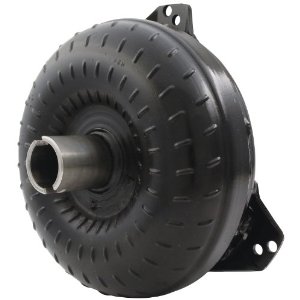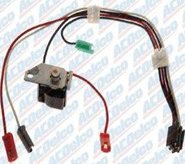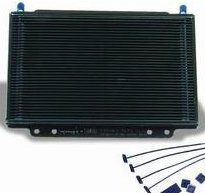Torque Converter Clutch Problems
Problem Torque Converter Clutches

I have written about torque converter clutch problems in other posts but this one will be a little different. Most often when I have a problem with the converter clutch lock up causing an engine stalling condition I find a problem with the tcc solenoid.
However, this is not always the cause of the problem. In fact the last time I faced a converter clutch lock up problem I went for the solenoid right away and it did not fix the issue which was an engine stall only when put into reverse gear. On this particular repair I ran into a clogged transmission cooler.
Although this was the first time I have ever seen this component cause a stalling condition, after checking into the situation it made a lot of sense. The drivers complaint was different this time around then the usual complaint associated with torque converter clutch problems.
The driver stated that the stalling condition was most often when he put the vehicle into reverse. Especially when the engine was cold, like in the morning while backing out of his driveway. In most cases when you have a torque converter solenoid issue the engine will stall as you slow down for a stoplight in a forward gear.
Transmission Cooler Problems

Some vehicles equipped with a converter lockup clutch might stall when the transmission is shifted into reverse gear. The cause of this problem might just be a plugged transmission cooler or clogged cooler lines and not the torque converter clutch solenoid.
The reason for this type of torque converter clutch problems is that the transmission fluid normally flows from the converter and directly through the transmission cooler. If the cooler passages are blocked fluid is unable to exhaust from the torque converter and the converter clutch piston can be forced to engage when reverse is selected.
Although as I mentioned this condition is not a common one, the test procedure is not that difficult to perform. It could save you from replacing a good TCC solenoid which on some models is not an easy task. If you want to verify that the transmission cooler is plugged you have to disconnect the cooler return line from the radiator or the external cooler if your vehicle is equipped with one.

Next you connect a short piece of rubber hose and to prevent it from slipping off the line you can use a couple of hose clamps. Put the end of the rubber hose into an empty bucket or large container. Next you start the engine and with the vehicle in park and the wheels blocked and you measure the amount of fluid that flows into the container after 20 seconds.
A good rule of thumb is that normally 1 quart of fluid should flow into the container in about 20 seconds of run time at engine idle. If less than that has filled the container it may be an indication of a plugged transmission cooler.
Some people prefer to try to clear a blocked cooler by using compressed air. I recommend replacing the cooler whenever possible. But if you do decide to use compressed air make sure you limit the air pressure to below 50 psi or you can cause internal damage to the cooler.
The reason I prefer to replace the part is because the little pieces that are left behind can work their way into the transmission or even clogged the filter. This can cause expensive internal damage to the transmission. A replacement external cooler is around a $100 and can save you a lot of aggravation.
If you are interested in learning more about transmission operation and seeing some common problems with specific models I have a section dedicated to the subject on my you fix cars website. You can learn more about the theory and operation of the torque converter and review some more automatic transmission problems. If you are interested in seeing more recent posts here visit the auto repair information blog homepage.

